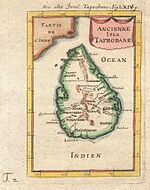| Revision as of 13:44, 15 February 2013 editKingminister (talk | contribs)270 editsNo edit summary← Previous edit | Revision as of 13:52, 15 February 2013 edit undoKingminister (talk | contribs)270 editsNo edit summaryNext edit → | ||
| Line 1: | Line 1: | ||
| ==Rajamanthri Walauwa== | |||
| '''Rajamanthrilage Walauwa''' ('''රාජමන්ත්රීලාගේ, වලවිව''') or ] of ] is situated in ], Rajawella ('''රජවැල්ල''') ]. Rajamanthri House is twelve-room, 200-year-old manor house which was built by the last ] of the ] in 1804. It was fully restored and opened by Prince Seimon Naide Rajamanthri in 1944 at Rajawella, Kandy. Currently the manor house has been converted to a resort villa and the estate were divided for varies business purposes such as resort, shopping complex, international school, sports ground, cinema hall and garment factory. The shopping complex began in 1985 and still remain at Rajawella city managing by two sons of Prince Julius. | '''Rajamanthrilage Walauwa''' ('''රාජමන්ත්රීලාගේ, වලවිව''') or ] of ] is situated in ], Rajawella ('''රජවැල්ල''') ]. Rajamanthri House is twelve-room, 200-year-old manor house which was built by the last ] of the ] in 1804. It was fully restored and opened by Prince Seimon Naide Rajamanthri in 1944 at Rajawella, Kandy. Currently the manor house has been converted to a resort villa and the estate were divided for varies business purposes such as resort, shopping complex, international school, sports ground, cinema hall and garment factory. The shopping complex began in 1985 and still remain at Rajawella city managing by two sons of Prince Julius. | ||
Revision as of 13:52, 15 February 2013
Rajamanthrilage Walauwa (රාජමන්ත්රීලාගේ, වලවිව) or Manor House of Rajamanthri is situated in Kandy, Rajawella (රජවැල්ල) Sri Lanka. Rajamanthri House is twelve-room, 200-year-old manor house which was built by the last Chief Minister of the Kingdom of Kandy in 1804. It was fully restored and opened by Prince Seimon Naide Rajamanthri in 1944 at Rajawella, Kandy. Currently the manor house has been converted to a resort villa and the estate were divided for varies business purposes such as resort, shopping complex, international school, sports ground, cinema hall and garment factory. The shopping complex began in 1985 and still remain at Rajawella city managing by two sons of Prince Julius.
History
Rajamanthri Walauwa also known as Rajamanthrilage Walauwa, the villa was built in 1804 by the Chief Minister to the final King of Kandy. The kingdom at that time forbade any but the royal residences to use roofing tiles but nevertheless Prince Rajamanthri built himself a replica palace with two sprawling stories of terracotta tiles. Two hundred years later, Geoffrey Bawa's protege Prince Julius Rajamanthri began work on a sensitive restoration that has kept the essence of the villa intact but brought it into the 21st century. Apparently, the manor house converted to a resort villa. The estate is a major producer of coconuts, rubber, pepper, cardamom, ginger, cocoa, areca-nut and coffee. Tree spices like nutmeg, cinnamon, cloves, vanilla, orchid and teak plantation etc. Manufacturing factory were situated at Rajawella estate and currently it has been converted to garment factory.
| Part of a series on the | ||||||||||||||||
|---|---|---|---|---|---|---|---|---|---|---|---|---|---|---|---|---|
| History of Sri Lanka | ||||||||||||||||
 | ||||||||||||||||
| Chronicles | ||||||||||||||||
| Periods | ||||||||||||||||
|
||||||||||||||||
| By Topic | ||||||||||||||||
Name
The word Walauwa may not have a Sinhalese origin. It is unclear whether it was a Sinhalese word from the beginning but this word may have been adapted from the Tamil word Walaw. In Sinhalese, it is plural rather than the singular word Walaw, which means mansion. The English word for Walauwa is manor or manor house, a large house with larger lands. The Walauwa and its owners were supported by the larger lands and estates they possessed. These either were land grants from kings since the beginning of the Sinhalese kingdom until the Kandyan era or government service during the Colonial era, or were acquired by successful enterprise and passed down though generations. Their owners were the landed elites of Ceylon; as such they gained a status of power and wealth.
There is another theory that Walauwa means a place where a judgement was given. Those people who occupied the Walauwa had the authority to pass judgement over people with the authority provided by Royal decree, either Sinhala or English. Mansions replaced the Walauwa in the urban areas towards the latter part of nineteenth century.
See also
- British Crown colony
- Caste Kandyan caste system
- Demographics of Sri Lanka
- Dissava
- History of Ceylon
- Kandyan Convention
- List of Kandyan monarchs
- Nayaks of Kandy
- Royal Palace of Kandy
References
External links
- http://internethomebusiness.sasonlinebusinesssuccess.com/news/Walauwa.html News: Walauwa]. Quote: "Walauwa is the name given to a feudal/colonial manor house in Ceylon (now Sri Lanka) built by native headmen."
- http://www.virtual Library-Sri Lanka
- http://www.lanka.info Family history of Rajamanthrilage
- http://www.tripadvisor.com/hotel_review An information
- http://sawdays.co.uk/serch/display.php History of Walauwa
- www.lanka.info
- http://experiencesrilanka.com/hotel
Categories: